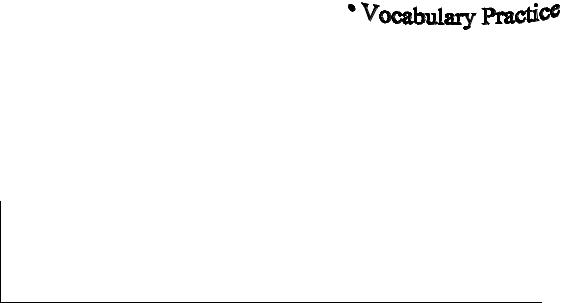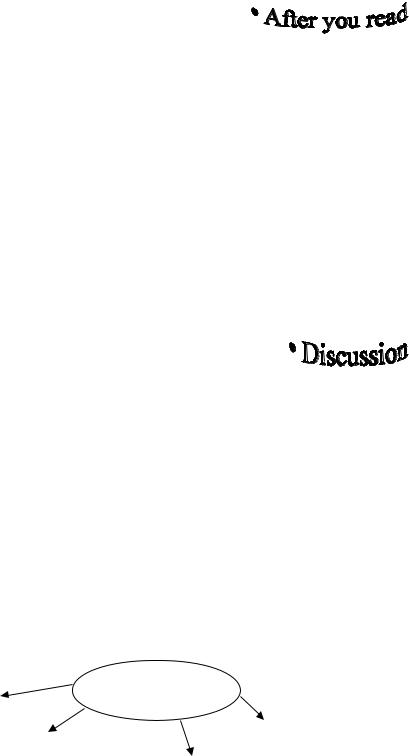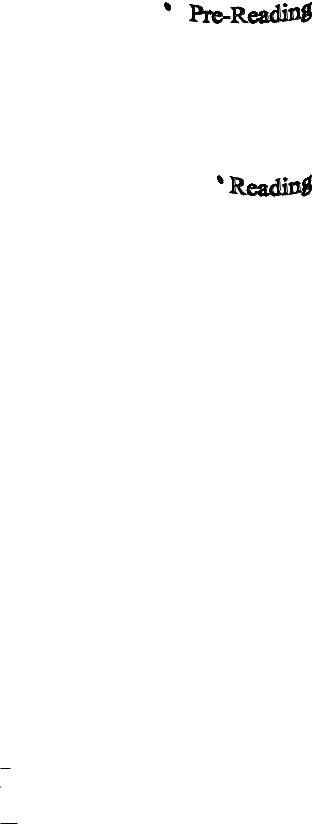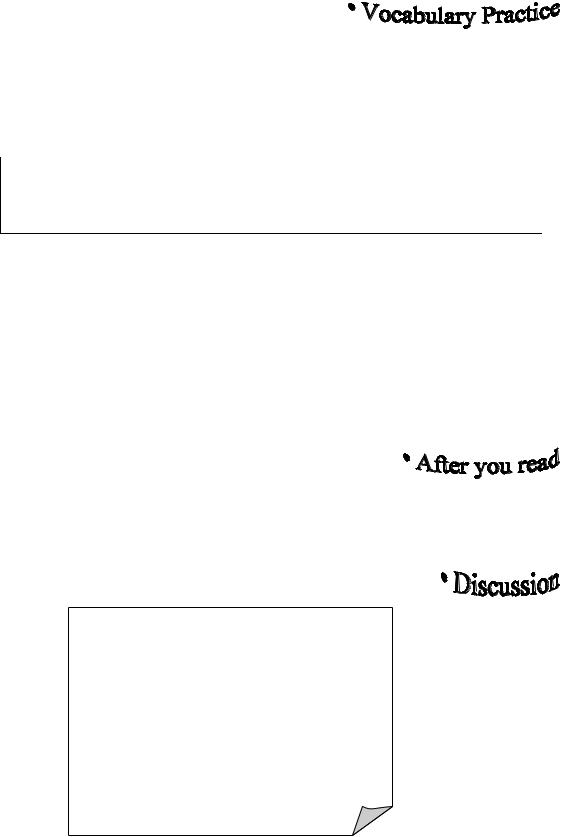
- •ФЕДЕРАЛЬНОЕ АГЕНТСТВО ПО образованиЮ
- •Рецензенты
- •Social Work: What is it?
- •10 Read the text below that reveals the problem of working conditions and earnings in the USA.
- •NASW Sponsors the SOS High School Suicide Prevention Program
- •NASW Endorses World Mental Health Day — October 10, 2004
- •For Immediate Release
- •February 23, 2004
- •NASW is Co-Sponsoring Partner of the “March for Women's Lives”
- •April 25, 2004 on the National Mall in Washington , DC
- •Social Security Policy
- •Disability
- •What is a ‘disability’?
- •10 Read the text that reveals one of the problems of disabled people and be ready to fulfil the tasks given after this text.
- •The 1995 Disability Discrimination Act
- •Organisations
- •Government
- •What can be done to improve the system of services for disabled people?
- •International Herald Tribune, 2001.)
- •Recovery from Traumatic Stress
- •(From: The Times, 2001.)
- •Money where their Mouth is
- •(By Robert M. Goodman, The Times, 2001).
- •15 Use additional sources (newspapers, magazines or Internet resources) to find the information about the events and foundations mentioned in the article ‘To Feed a Growing World Family, Fund Science for Farmers’:
- •Gates foundation
- •Kellogg foundation
- •McKnight foundation
- •16 Before reading the article that is called ‘Africans Are Ready for Bold Change, With Help’ make comments on the following statement:
- •“It is time that politicians and voters in reach countries realized that without a bright future for the poor, the future can’t be bright for the rest of the world.”
- •Africans Are Ready for Bold Change, With Help

3 Now read the text below on how the problem of defining disability is viewed in the UK and check whether your ideas coincide with the views expressed in the passage or not.
What is a ‘disability’?
Several writers and organizations have tried to make a distinction between physical aspects of disability and socially created limitations. Ann Shearer uses the terms ‘disability’ and ‘handicap’ in this way, suggesting that disability must be taken as given, but handicap is something that is imposed on that disability to make it more limiting then it must necessarily be. The extent to which a disability is a handicap depends on a number of factors such as a type of job a person has, the services that exist to help, the attitudes of society and the personality of the person with the disability. Ann Shearer illustrates this point by arguing that not being able to run for a bus wouldn’t be a handicap if buses waited for the passengers. However, many disabled people find a term ‘handicap’ offensive because of its historical association with begging and charity. A similar distinction can be made using the term
‘impairment’ to refer to the physical dimension and ‘disability’ as the term that incorporates the socially created aspects.
These distinctions are important because they reflect differing ways of thinking about disability. On the one hand, there is a medical model of disability, which focuses on the individual and physical conditions (impairments). A social model of disability takes the focus away from the individual and looks at disabling environments – ways in which society creates disabilities.
The definition, adopted by Oliver and Barnes, suggests that the term disability refers to:
the disadvantage or restriction caused by a contemporary social organization which takes no or little account of people who have…impairments and thus excludes them from the mainstream of social activities.
(By Y. Pat, Mastering Social Welfare.)
32

4 Look at the words in bold in the text ‘What is a ‘disability’?’ and try to explain them. Make up sentences with these words.
5 Fill in the correct word(s) from the list below. Use the word(s) only once.
limitations |
contemporary |
the mainstream |
disability |
begging |
the individual |
environments |
created |
society |
account |
personality |
handicap |
|
|
|
|
1.different ways of thinking about ……
2.caused by a …… social organization
3.historical association with …… and charity
4.excludes them from …… of social activities
5.that incorporates the socially …… aspects
6.the attitudes of …… and the …… of the person
7.takes the focus away from ……
8.looks at disabling ……
9.but …… is something that is imposed on that disability
10.socially created ………
11.which takes no or little …… of people
33

6 Answer the following questions using the information from the text above:
oWhat are the definitions of disability given by Oliver and Barnes and Ann Shearer? What do they focus on?
oExplain the meaning of the following terms used in the text:
-medical model of disability
-social model of disability
-impairment and disability
-disabling environments
7Discuss the following questions in pairs or groups:
oCan you identify any common areas of need for disabled people in your country?
oTo what extent are disabled people’s needs being met?
8 Imagine that you are a person who has some kind of disability. Tell about your life using the scheme that is given below.
|
problems |
disability |
actions to get |
|
|
||
1. lack of communication |
|
rid of problems |
|
2. ……… |
feelings |
dreams |
1. to commit a |
|
1. frustration |
suicide |
|
|
2. .…………. |
1. to be ‘normal’ |
2. ……… |
|
|
2. … …. |
|
34

9 Read the statement provided below and give your own comments. Back up your opinion.
“The people with a disability are human beings in the same way as everyone else and only different to the extent that they suffer from a particular condition.”
M. Oliver
10 Read the text that reveals one of the problems of disabled people and be ready to fulfil the tasks given after this text.
Acceptance
Needs vary but may include financial support, special educational facilities, sheltered employment, support, help in making social contacts, and aids and help in the practicalities of daily life. Often the greatest problem is not the impairment itself, but other people’s attitudes which may then be internalised by the sufferer.
In the following extract, a woman with multiple sclerosis explains how she felt about categories of normality after the onset of the disease:
I was confused; I still felt fundamentally the same. My body was different, I know that all right, but inside it was me. Normality is after all what you know. The male who is very short is normal to himself, it’s other people who make him aware of an ‘abnormality’. The ugly female is ‘normal’ to herself, it’s the others who make her ‘abnormal’. ’Normality’ and ‘abnormality’ are socially defined. Disability can and sometimes does interfere with the practical running of a life, but it is the reaction of and nonaction of society which causes
disablement. There is no such thing as THE DISABLED, there are just people.
On leaving hospital and finding the mantle of ‘disabled’ places firmly upon my unwilling shoulders I entered a world which was alien, absurd and ultimately defeating. My weak grasp on my identity was no real match for the massed forces of society who firmly believed themselves as ‘normal’ and myself just as firmly as ‘abnormal’. I found myself inhabiting a stereotype. I became my illness.
(By Y. Pat, Mastering Social Welfare.)
35

11Go back to the text, look at the word(s) in bold and try to explain them. Make sentences with these word(s).
12Fill in the correct word(s) from the list below. Use the word(s) only once.
contacts |
a stereotype |
the practical running |
||
employment |
the massed forces |
educational |
||
alien |
|
unwilling |
the practicalities |
|
1.interfere with …… of a life
2.sheltered ……
3.help in making social ……
4.entered a world which was ……
5.special …… facilities
6.inhabiting ……
7.was no real match for ……
8.help in …… of daily life
9.firmly upon my ……shoulders
13 Make your comments on the statement underlined in the text. Do you agree or disagree with these words?
In pairs discuss the problem considered in the text “Acceptance” and think what can be done to improve the attitudes to disability? Make a plan of your ideas and develop some strategies on how to improve the situation in our society and change the stereotypes which exist. Be ready to present your opinion in class.
36
